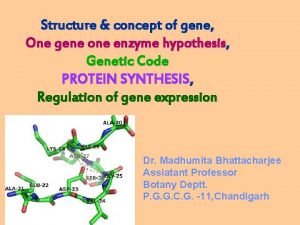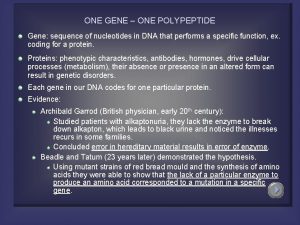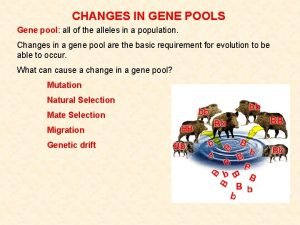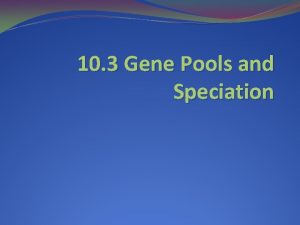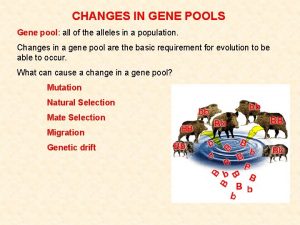Gene Pools Concept 14 4 pp 310 316












- Slides: 12

Gene Pools Concept 14. 4 pp. 310 -316

Gene Pool Definition- consists of all the alleles in all the individuals that make up a population. A population is the smallest level at which evolution can occur. The gene pool is the reservoir of genes. It supplies the genetic variation for evolution. Sexual recombination- meiosis and fertilization provide variety in offspring. Mutations & sexual recombination –random and cannot be predicted.

Gene Pool Definition- frequency of alleles- how often certain alleles occur in the gene pool. Expressed as a decimal or %. Each plant has 2 alleles for color- 20 total alleles. 14 red alleles (70%) and 6 white alleles (30%) l

Microevolution Definition- evolution on a small scale generation to generation change in the allele frequency within a population. Hardy-Weinberg Equilibrium Describes populations in which the gene pool does not change. Such populations have constant allele frequencies; are not evolving. Rare for populations to remain in H-W equilibrium. Serves as a no-change baseline

Changes to a gene pool 2 main factors Genetic drift Natural Selection Genetic Drift Definition-a change in the gene pool due to chance. It is by chance which organisms will successfully reproduce passing on alleles to the next generation.

The first generation of the small wildflower population illustrated consists of nine plants with red flowers (RR and Rr) and one plant with white flowers (rr). It is partly chance that affects which plants reproduce. By the third generation, no plants carry the allele for white flowers. The result is a change in allele frequencies in this population

The smaller the population the greater the impact of genetic drift. Larger populations are more stable. Reducing the size of a population reduces the size of its gene pool and reduces genetic variation in a population. May affect a population’s ability to adapt. 2 situations that drastically reduce the size of a population Bottleneck Effect-disasters Founder Effect- new colonies

Bottleneck Effectearthquakes, floods, droughts, and fires Marbles falling through the narrow neck of a bottle serve as an analogy for the bottleneck effect. Compared to the original population (in the bottle) the new population has less variation

Gene Flow The exchange of genes with another population. Migration of fertile individuals between populations. Gene flow reduces genetic differences between populations and could result in a single population.

Mutations- have a key role as the original source of genetic variation for natural selection. Especially important in asexually reproducing organisms- bacteria. Biological Fitness- Contribution to the gene pool of the next generation. Production of healthy, fertile offspring is what counts in natural selection.

Darwin’s Finches Peter and Rosemary Grant’s Research 30 yr. Study in the Galapagos. 2 species of finches with different beak sizes. Their data related beak size to changes in environment - wet and dry seasons and types of seeds available. Data provided evidence for natural selection occuring in a shorter time span. Figure 14 -31.

Grants’ Finches on Daphne Major










